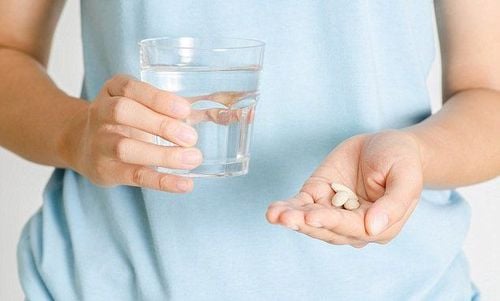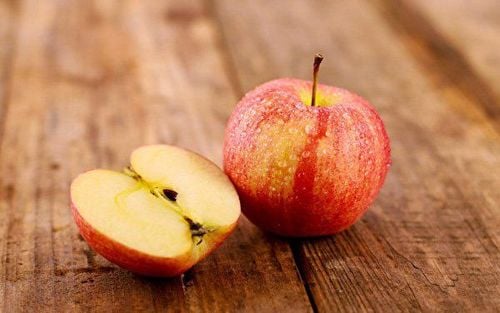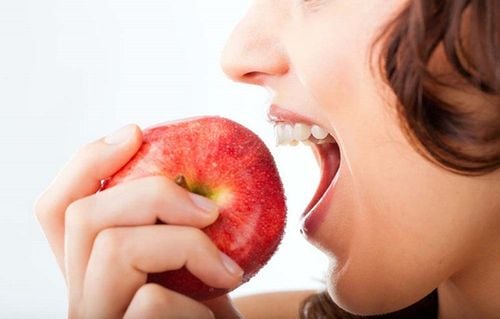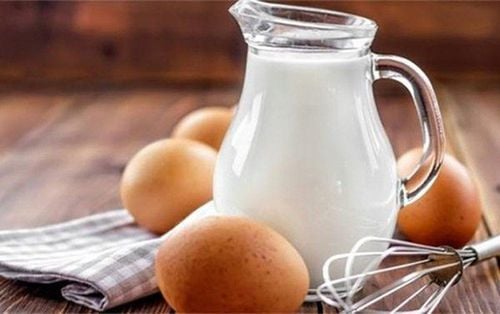This is an automatically translated article.
Every healthy meal is a building block in your healthy eating style. Make sure to include all the food groups for the day. Make fruits, vegetables, whole grains, dairy foods and proteins part of your daily meals and snacks. Also, limit added sugar, saturated fat, and sodium. In the article below, you will find useful information to know a healthy and balanced diet for yourself and your family.
1. How healthy diet?
A good healthy diet is important to our health and can help us feel our best - but what is a good diet? Other than breast milk, which is the food for babies, no food contains all the essential nutrients the body needs to stay healthy and function properly. For this reason, our diet should contain a wide variety of foods, to help us get the variety of nutrients our bodies need.
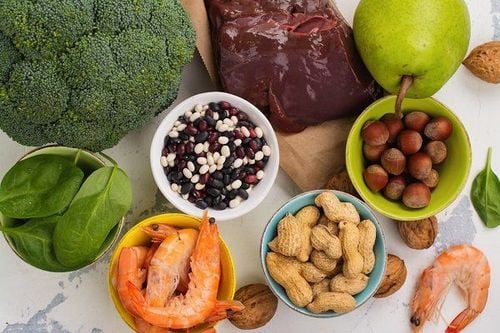
Chế độ ăn dinh dưỡng sẽ giúp tăng cường sức đề kháng cho cơ thể
2. How much food do I need for a healthy diet?
A healthy diet should provide us with the right amount of energy (calories or kilojoules), from food and drink to maintain energy balance. Energy balance is where the calories taken in from the diet equal the calories the body uses. We need these calories to perform everyday tasks like walking and moving, but also for all sorts of bodily functions we might not think about. Processes like breathing, pumping blood around the body, and thinking also require calories.
So food and drink provide the calories we need for daily living, but consuming more calories than we need over a period of time will cause weight gain. This is because, any extra calories we consume but we don't use, will just be stored as fat.
There is also a great concern about childhood obesity, as 1 in 3 children aged 4-5 years old between the ages of 10-11 is overweight or obese. Being overweight as a child increases your risk of developing type 2 diabetes, heart disease, and some cancers in adulthood. Therefore, maintaining a reasonable weight is really important for health.
How much energy you need from food and drink depends on many different things, such as your activity level. But, on average: women should have about 2000 calories per day, in men about 2500 Calories per day.

Việc tính toán lượng calo nạp vào cơ thể rất quan trọng
3. Menu building model
3.1. What is this model?
This is a simple, practical tool to help us make healthy choices and show the proportions of different food groups needed to create a healthy and balanced diet.
3.2. Who does this model apply to?
This model is suitable for most people, regardless of weight, dietary preferences, ethnic origin, religious or cultural beliefs.
However, this does not apply to children under two years of age because their nutritional needs are different. Children between the ages of two and five should gradually start eating the same foods as the rest of the family.
Anyone with a medical condition or special dietary requirements may need advice from their GP or health professional about their diet.
3.3. How to apply this model?
This model took the foods and drinks we consume and divided them into five main food groups, each with different proportions. You don't have to eat all of the groups in this ratio at every meal, but over a period of a day or even a week.
Each group provides different essential nutrients, so we should try to choose a variety of foods from each food group to ensure our diet provides all the essential nutrients. which our bodies need to function properly and stay healthy.
None of these food groups should or should be excluded. For example, cutting out entire food groups and avoiding starchy carbohydrates can reduce your intake of important nutrients like fiber and B vitamins.
The size of each group in this Guide indicates the proportions of these foods that should make up our diet.
Most of what we eat should come from ingredients found in the two largest food groups - starchy carbohydrates and fruits and vegetables.
Legumes, beans, fish, eggs, meat and other protein groups, and the dairy and smaller substitutes group, suggest that we should eat foods from these groups in moderation.
The group of oils and spreads illustrates that although some fats are essential in a healthy, balanced diet; We often eat too much saturated fat. Most of the fat in our diet should come from unsaturated oils and spreads, but all of these foods are high in calories and so should only be eaten in small amounts.
This model also displays foods high in saturated fat, salt and sugar outside of the main image, meaning they are not needed as part of a healthy, balanced diet. Eating too much of these foods can be harmful to our health, so if they are consumed, it should be done only infrequently and in small amounts.
4. Menu guide on how to achieve a healthy, balanced diet
4.1. Fruits and vegetables: “Eat at least 5 servings of fruits and vegetables a day.”
How much should be used?
One serving = 80g One serving of dried fruit = 30g One serving 100% sugar-free juice/smoothie = 150ml limit total number of combinations per day Some foods include:
All fruit and vegetables, including fresh, dried, frozen, canned and juiced varieties. Dried and juiced each only counts for up to 1 of your 5 days. Potatoes do not belong to this group. They are included in the group of starchy carbohydrates. Tip for healthier options:
Add a banana to your breakfast cereal for extra sweetness. Try fruit as a morning snack, and root vegetables like carrots, cucumbers or celery as an afternoon snack with some low-fat hummus. Add grated carrots to your pasta sauce.
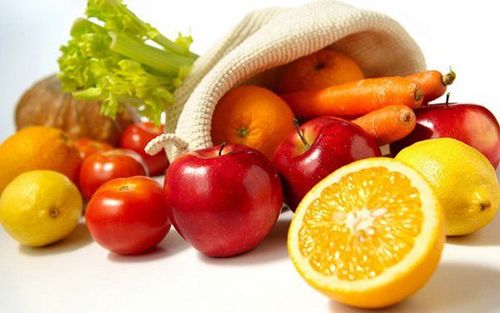
Tăng cường nhiều hươn nữa trái cây vào chế độ ăn
4.2. Potatoes, bread, rice, pasta and other starchy carbohydrates
How much should be used: We should base our meals on starch. This group makes up just over a third of the food we eat.
Some of the foods include: Potatoes, bread, rice, breakfast cereals, Oats, pasta, noodles, corn, cornmeal, Couscous, bulgur, polenta, millet, wheat, pearls, sweet potatoes and plants
Tips for healthier choices:
Choose whole grains . They're packed with fiber and other nutrients (like whole-wheat bread, whole-wheat pasta, or brown rice, for example). Remove the potato skins for more fiber. Don't add too much fat to these foods (like butter, mayonnaise, or cream sauces), as this will add more fat.
4.3. Milk and milk substitutes
How much is enough: We should try and have some milk and dairy foods (or dairy alternatives) in our diet every day.
Some foods include: Milk, cheese, yogurt, fromage frais, quark, cream cheese, dairy alternatives fortified with calcium for these foods, such as beverages soy and soy yogurt are high in saturated fat.
Tips for making healthier choices:
Use food labels to help choose lower fat and sugar versions, such as semi-skimmed or 1% milk, low-fat yogurt and cheese cool reduce fat. Standard unusable e.g. choose strong flavored cheeses for sauces like mature cheddar, so you can use less. Choose sugar-free, calcium-fortified milk alternatives.
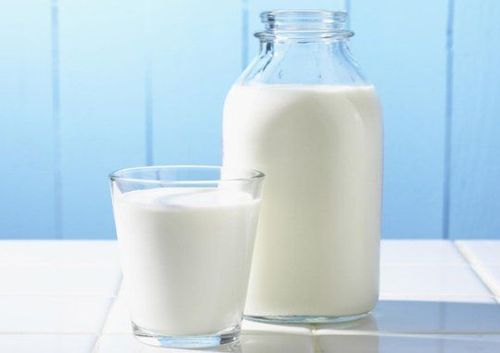
Sữa và sản phẩm từ sữa là nguồn cung cấp dinh dưỡng tuyệt vời
4.4. Beans, beans, fish, eggs, meat and other proteins
How much should be used: Eating certain foods from this group is important. Consumers who consume a lot of red or processed meat per day (90g or more) should try to cut back (no more than 70g).
Some foods include: Meat and poultry, white fish, oily fish, shellfish, nuts, eggs, beans and other legumes, and vegetarian meat alternatives like beans accessory or mycoprotein.
Tips for healthier options:
Choose lean cuts of meat and mince, and remove any visible fat on the meat or skin on thick buns to reduce our saturated fat intake. Grill, grill, or boil meat and fish instead of frying and try to avoid fish in batter, breadcrumbs or cakes, as these can be high in fat and salt. Beans (lentils, chickpeas, beans) are good alternatives to meat because they're low in fat and high in fiber. Why not in curries, stews or soups.
4.5. Oils and spreads
How much is enough: Unsaturated fats provide essential fatty acids and fat-soluble vitamins, so they are an important part of your diet. However, consumption should still be limited. because they are high in calories
Some foods include:
Unsaturated oils (vegetable, rapeseed, olive and sunflower oils). Soft sponge cake made with unsaturated oil Note: Butter is high in saturated fat and is not included in this heading. Some of these foods include:
Try to replace saturated fat with a small amount of unsaturated fat, which can help reduce the risk of heart disease, for example: rapeseed oil instead of coconut oil or butter . Remember that all fats are high in calories, so you should use them in small amounts to help maintain a healthy weight.

Nên thay thế dầu động vật thành dầu oliu
4.6. Food should be eaten sparingly and in small amounts
How much is enough: If you choose to include these foods in your diet, they should be consumed in small amounts often. Most are consuming too much saturated fat, sugar and salt
Some of the foods include:
Foods/drinks high in saturated fat, salt and sugar Chocolate and sweets, cakes and cookies, puddings and cakes, jams, table sugar, syrups and honeys, savory snacks such as crisps and biscuits, rich sauces and gravies, butter and butter, cream and cream , mayonnaise, fried foods and sugary soft drinks Some foods include:
Instead of spreading butter, jam, marmalade or honey on toast, try a low-fat spread or banana instead sliced. Eat wholegrain fruit pies, fruitcakes, or oatcakes instead of croissants, cakes, or cookies. If you like carbonated drinks why not try diluting a small amount of juice with carbonated water.
Please dial HOTLINE for more information or register for an appointment HERE. Download MyVinmec app to make appointments faster and to manage your bookings easily.
TAG: healthy eating, menu, milk, sweets, fruit, vitamins, balanced diet




